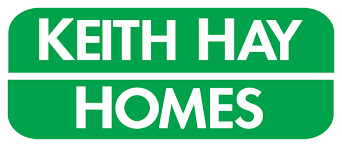From Monday next week, the Health and Safety at Work Act (HSWA) comes into effect putting landlords under a positive obligation to ensure the health and
safety of any workers (and subcontractors) you engage for the purpose of your rental business. With the HSWA being at its infancy, the landscape
for health and safety in New Zealand will undoubtedly continue to evolve in the coming years as the judiciary partakes in interpreting, applying and
therefore further shaping the new law. How the HSWA will be translated in terms of specific health and safety standards within the context of
residential tenancy is yet to be seen. For the time being however it is important for landlords to have a good general understanding of what
the HSWA intends and the key principles ensconced in this new piece of legislation.
Related: How will landlords be affected by the new workplace health and safety laws?
No black and white list of hazards
It is important from the outset to note that the HSWA is a principle-based piece of legislation that does not contain a list of known hazards and prevention
measures. The Act itself is not instructive as to which exact hazard to prevent or mitigate and is certainly not a direct authority for their
prevention or mitigation. For example, for some months there has been whisperings of meth lab testing being made compulsory for all rental properties because of the HSWA. In the absence of a test case and specific pronouncement by the courts, the industry itself is
fairly divided as to whether this is the case. The Act does not serve as a direct authority as there is nothing in the wording
of the HSWA specifically requiring all rental properties to be meth tested but rather the authority stems from an interpretation of the HSWA
alongside the RTA.
So far as any statutory standards is concerned the requirement is for landlords to ensure the health and safety of all workers so far as reasonably practicable (more
on that later).

High penalties
What is fairly black and white under the HSWA is the setting of higher penalties and tougher prosecution under the Act.
Following the establishment of a breach having been committed, a three-tier penalties system kicks in:
- Offence of reckless conduct, where a person under a health and safety duty without reasonably excuse engages in conduct that exposes an individual
to whom a health and sweaty duty is owed to a risk of death or serious injury or illness – up to $300,000 or a term of imprisonment not exceeding
5 years for an individual or up to $600,000 or a term of imprisonment not exceeding 5 years for a PCBU or Officer; - Offence of failing to comply with healthy and safety duty that exposes an individual to the risk of death or serious injury or illness – up to $150,000
for an individual or up to $300,000 for a PCBU or an Officer; - Office of failing to comply with health and safety duty – ump to $50,000 for an individual or up to $100,000 for a PCBU or an Officer.
Additionally, at sentencing new orders may be imposed including:
- Adverse publicity orders, requiring the offender to publicise in a particular manner the offence, its consequences, and the penalty imposed;
- Restoration orders, requiring an offender to take specified steps to remedy any matter caused by the offence;
- Project orders, requiring an offender to undertake a specific project for the general improvement of work health and safety; and
- Cour-ordered enforceable undertakings, adjourning the proceeding for up to two years, during which the offender undertakes to comply with certain conditions.

Person Conducting a Business or Undertaking (PCBUs) and duties of a PCBU
HSWA creates a class of people/entities to have the primary duty of workplace health and safety known as the PCBUs.
Under the HSWA a PCBU
- must ensure, so far as reasonably practicable, the health and safety of all workers who work for the PCBU, while the workers are at
work in the business or undertaking, as well as workers whose activities in carrying out work are influenced or directed by the PCBU; - must, so far as is reasonably practicable, provide and maintain a work environment that is without risk to health and safety;
- Specific duties imposed on PCBUs to so far as is reasonably practicable include:
- Provide an maintain safe plant and structures and safe systems at work;
- Ensure safe handling and storage of paint, substances and structures;
- Provide adequate facilities for the welfare of workers at work as well as provide all information, training, instruction and supervision that
is necessary to protect all persons from risks to their health and safety; and - Monitor the health of workers and conditions of the workplace for the purpose of preventing injury and illness of workers arising from the
conduct of business or undertaking.
In an email to APIA, Worksafe has confirmed that for the purpose of the HSWA, residential landlords are considered PCBUs.
Worksafe New Zealand has published a FAQ page for commercial landlords and property managers which may be used as a very general guideline on the
practical application of the HSWA. While it is not entirely instructive for residential landlords, Worksafe has indicated that the expected
level of responsibility for a residential landlord will be lower.Related Article: HSWA FAQs and Mythbusting – Property Management
Reasonably practicable
The HSWA also creates a trigger-phrase that is ‘reasonably practicable’ which is a key component of scoping the primary duty placed on PCBUs. When
considering whether a breach has occurred, the HSWA requires the court to consider whether steps taken were ‘reasonably practicable’.
Reasonably practicable is defined as ‘that which is, or was, at a particular time, reasonably able to be done in relation to ensuring health and
safety, taking into account and weighing up all relevant matters, including:
- the likelihood of the hazard or the risk concerned occurring;
- the degree of harm that might result from the hazard or risk;
- what the person concerned knows, or ought reasonably to know, about the hazard risk and ways of eliminating the risk;
- the availability of suitability of ways to eliminate/minimise the risk; and
- cost associated with available ways of eliminating or minimising the risk.

You can see therefore that reasonably practicable is the grey paint that has been brushed over this new age
of health and safety. Parliament is not prepared to anticipate every single hazard conceivable under the Act so refrains from any level specificity
in that regard. Rather, it has left the matter to industries and individual PCBUs to set their own health and safety standards with it comes
to specific hazards. This creates an opportunity for landlords and the entire residential property industry to set its own health and safety
standards that will undoubtedly be confirmed by the courts over time. As a residential landlord, you now have an unique opportunity to overhaul
your health and safety practice, set up reasonably practicable protocols for you, your employees and contractors to follow. It is also a good
opportunity for you to meet with your tenants to identify and document potential health and safety hazards and set up response protocols for all parties
to follow. Your current tenants are a real asset to this process since they are the ones on site who would have intimate knowledge of potential
hazards of not just the property but also fittings and fixtures. Early tenant buy-in surely sets a foundation for a robust health and safety
protocol.
A practical example from Worksafe
To give more clarity of where things stand, Worksafe has kindly provided an example:
For example, if a landlord engages a plumbing firm to do repairs on a rental property, they have control over the engaging of that company. So they could set healthy and safety standards they expect of the company they hire (e.g. they have to be a member of a professional body, they have to be qualified for the job they have to have previous experience of doing this wok etc). But once the plumbing company is on site the landlord will have little influence or control over their day to day work (unless there is some hazard on the property the plumber should know about). The risks created by the plumbing company on the job are up to them to manage.
What to know now
So far as workplace health and safety is concerned, the HSWA provides general guidance as to who has the duty to ensure health and safety and what considerations
they must take in preventing and mitigating potential hazards. Within the context of residential tenancy there will surely be more developments
in the coming years that will inform the industry in a way that is more specific and instructive. For the time being however the important messages
to note are:
- That landlords are PCBUs under the HSWA and therefore carry a positive duty to ensure health and safety at your rental properties;
- That there is no statutory proscribed list of hazards to be mitigated and prevented but rather a general overall duty for landlords to ensure health
and safety so far as reasonably practicable; - That the HSWA gives landlords the opportunity to create a comprehensive health and safety programme at each rental property by inviting tenant input
as to potential hazards at an early stage; - That APIA will facilitate a series of HSWA presentations around Auckland involving different speakers from various industries to keep members abreast
of industry developments in order; - That health and safety standards within the framework of residential tenancy are by no means set in stone. It is expected that future case laws
will provide the industry further guidance as to how to handle specific potential hazards. The fat lady is yet to sing and stay tuned.
Have you already created your own health and safety standards at your rental property? What are some of the potential hazards you have identified and how will you be managing them? Share your views by commenting below.















Add Comment